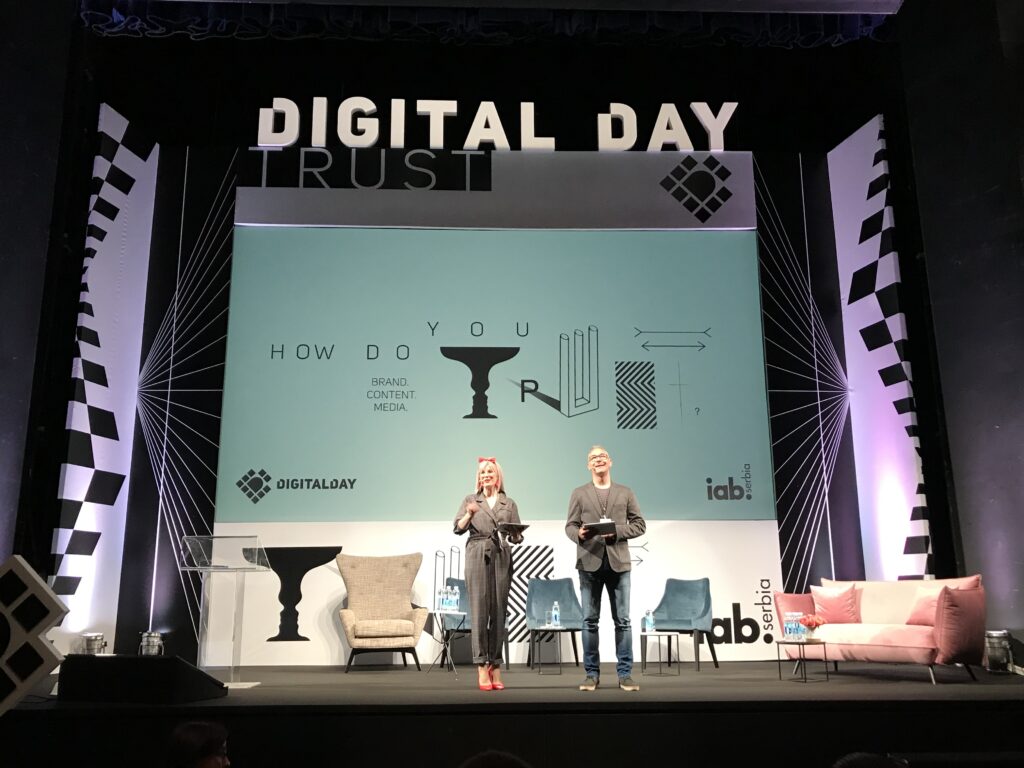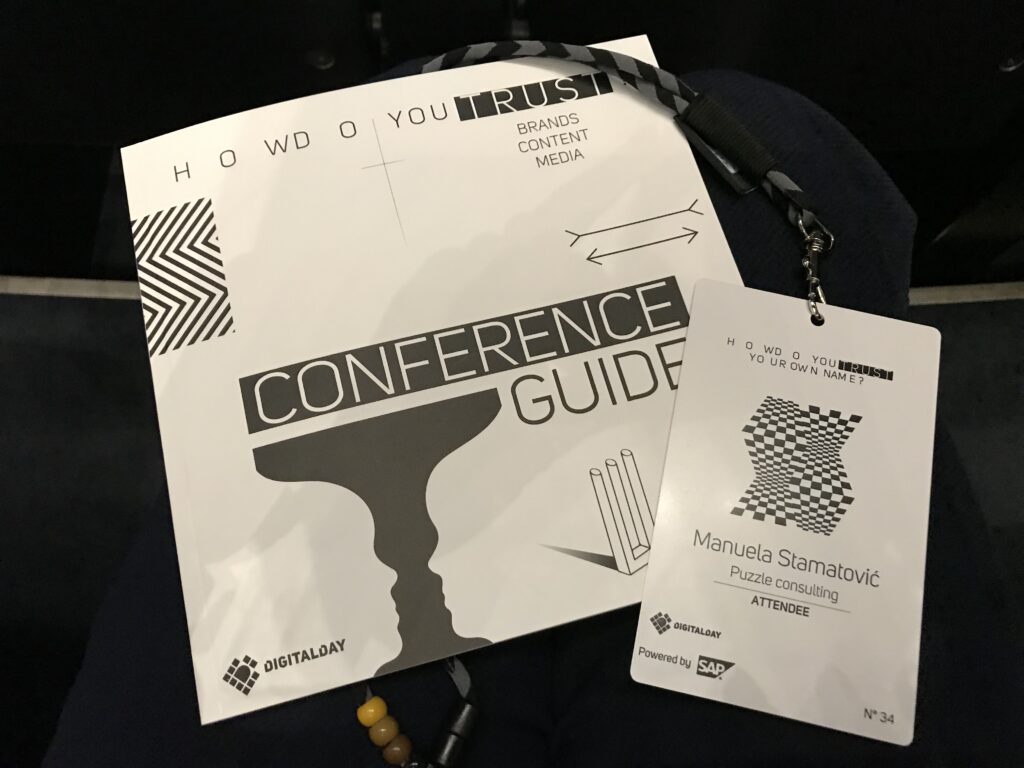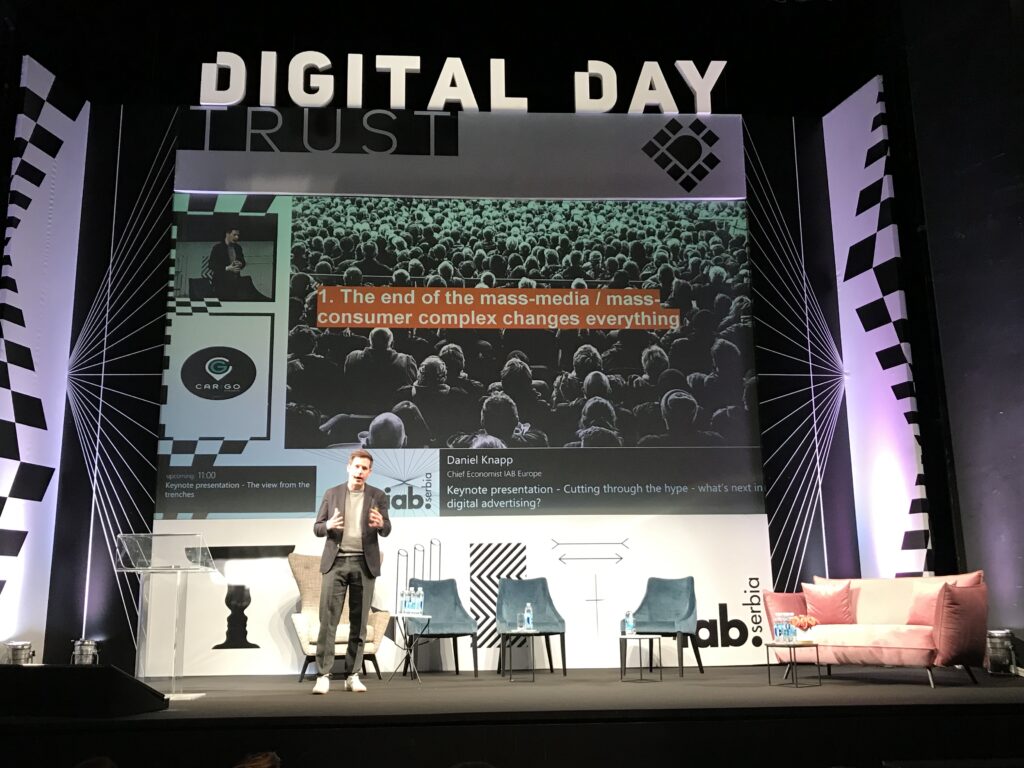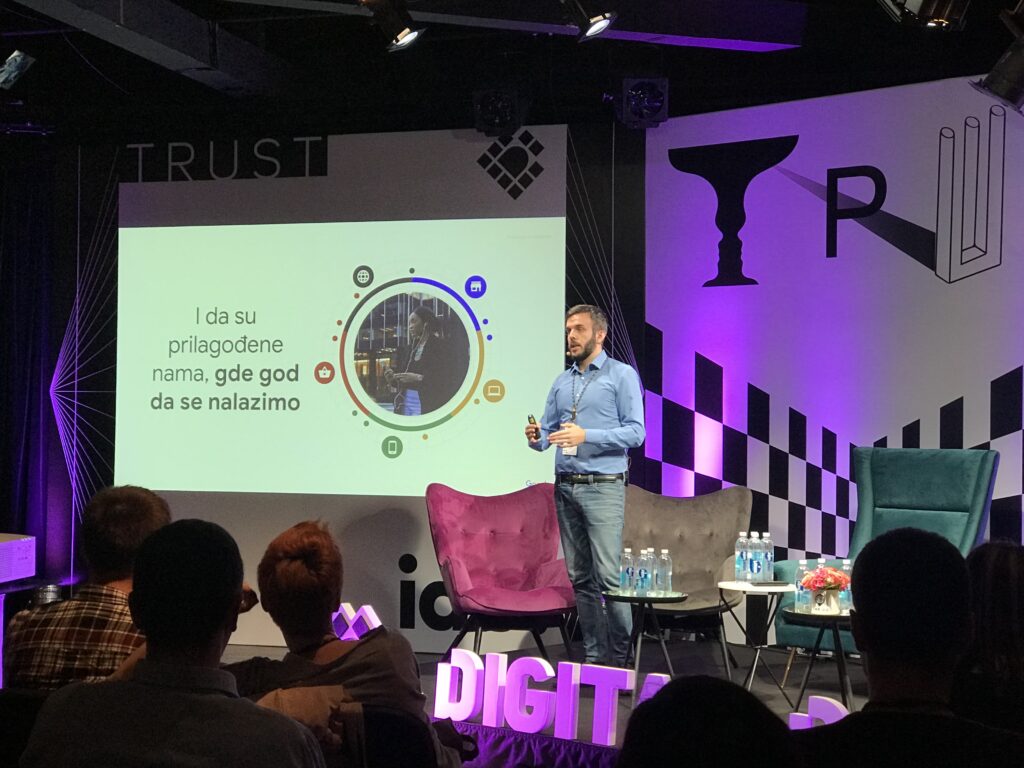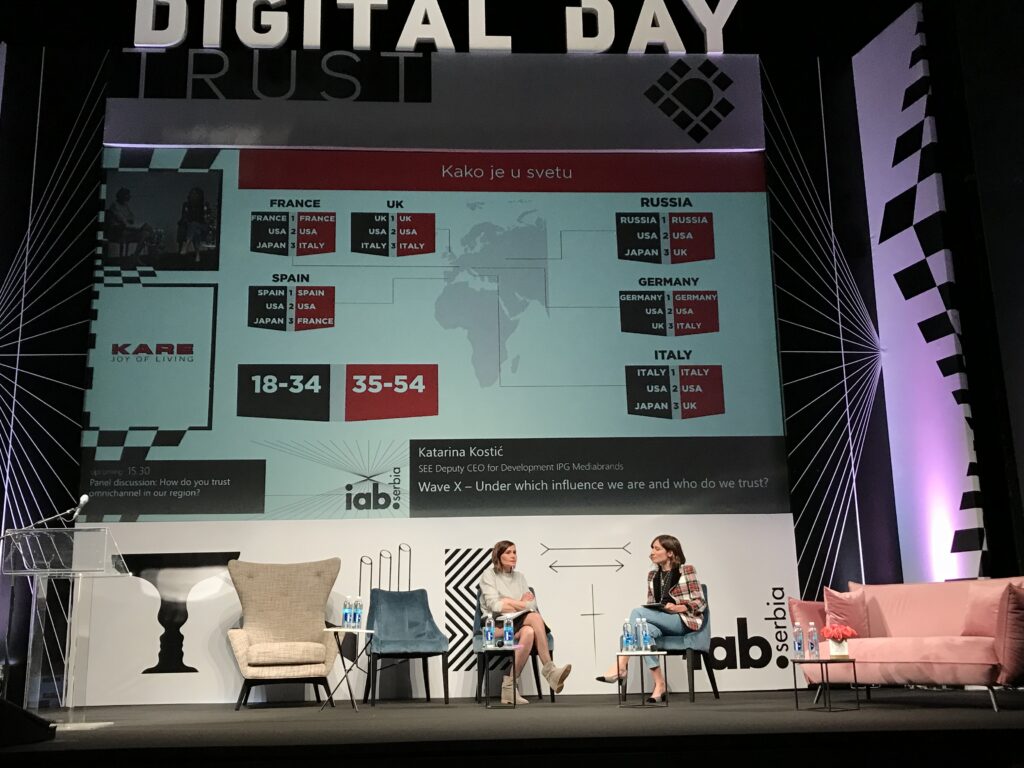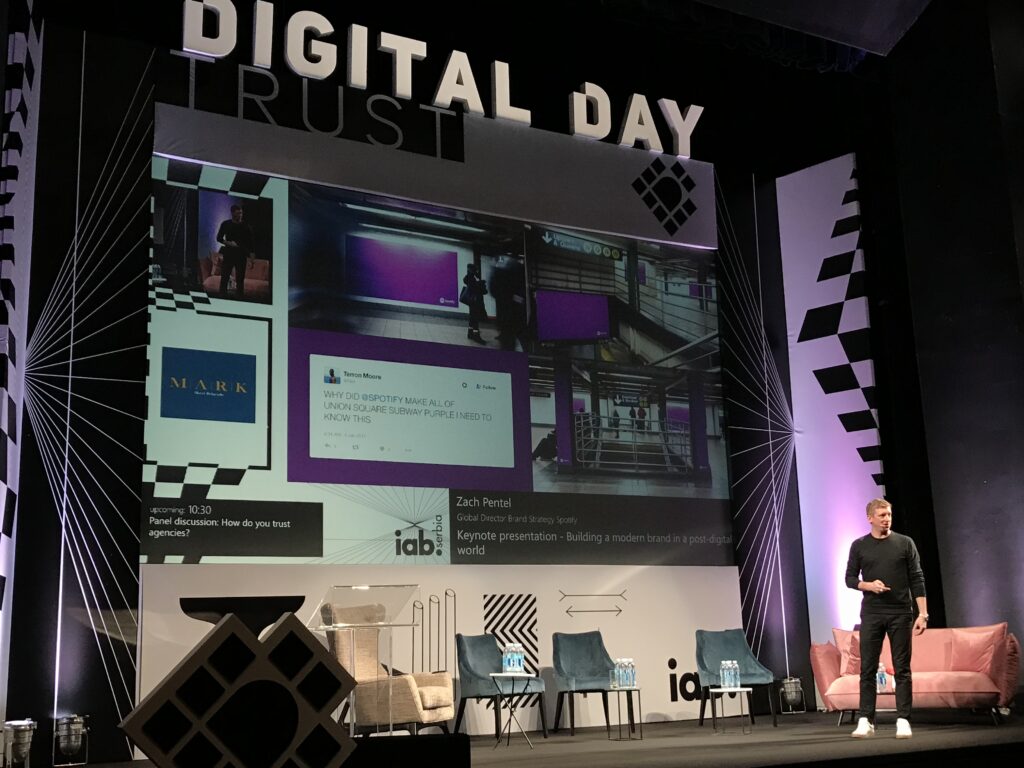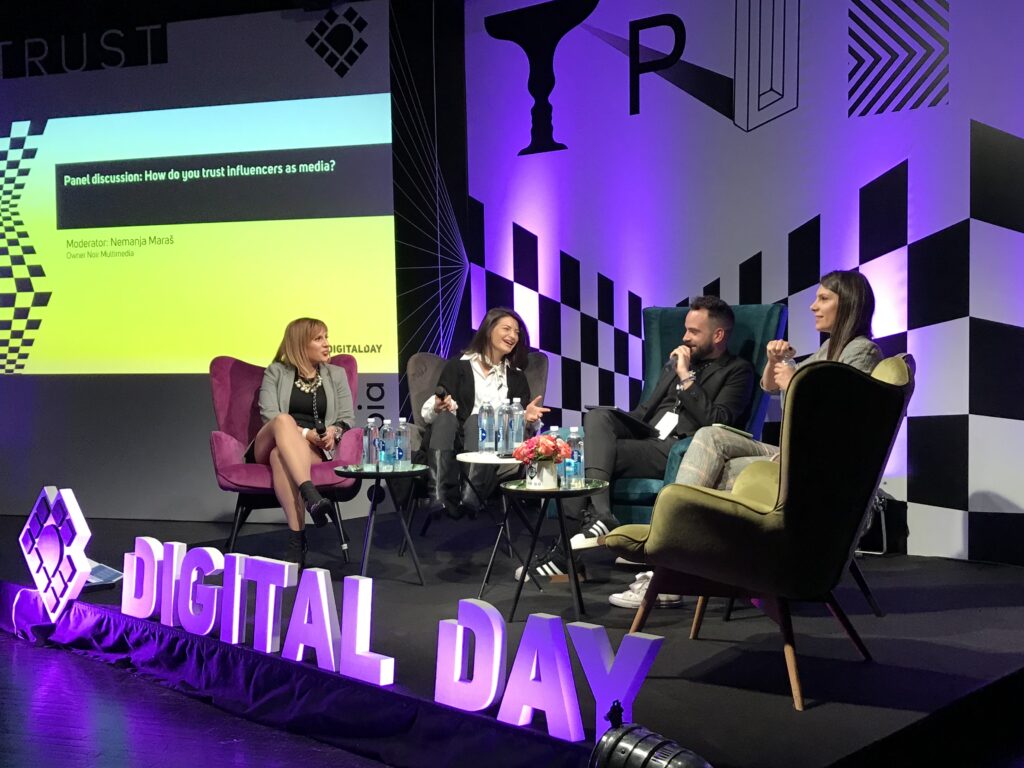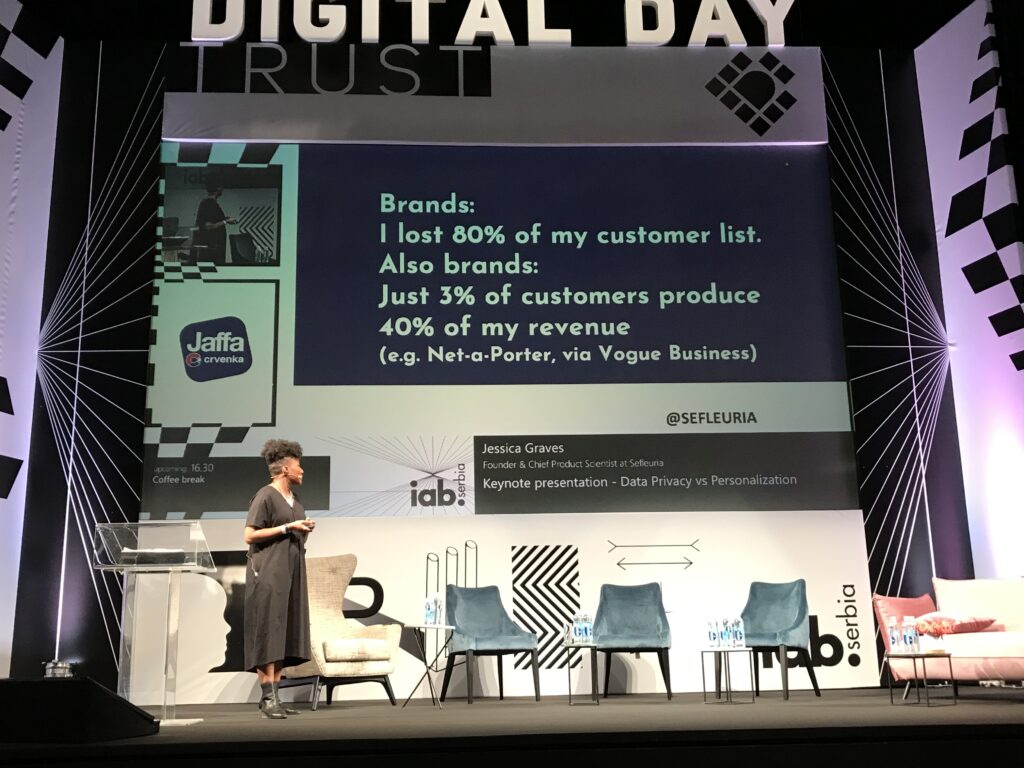How Do You Trust Digital Media?
After recently having spent two fully packed days at the Digital Day conference in Belgrade which bore the catching title „How do you trust?“, I am still hyped about the inspiring and challenging discussions that were part of the program this year.
The choice of speakers and companies supporting the event promised extraordinary content and high-level insights – the list ranged from Google, over IAB, to SAP and Spotify, thus the selection of fascinating topics and presenters announced a real abundance of new information when it comes to digital marketing. And I have to say, we were not disappointed.
Adex 2018 Research
Already traditionally, the conference was opened with the presentation of the results of the Adex Research 2018 that was brought to us, also traditionally, by Rade Tričković, Managing Director at Httpool. He underlined that the digital media market is strong and growing, with a total ad spend of 36,8 million Euro in 2018 which represents a digital advertising YoY growth of 24,8%. Promising. Nonetheless, it still represents only 20% of the total investment in media on the Serbian market, where TV still stands strong. No big surprises there. What was an interesting add on, however, was that investment in local display is for the first time declining but remains dominant which is not the case for other markets. Local display and social hold the largest share of the digital market investment – 48% combined. What was motivating to hear in the end was that the strong investment growth in digital media is expected to continue and Serbian trends in this domain are beginning to look like global trends.
What exciting news! The market is healthy, investments are increasing, new players are arriving… It is the privilege and big advantage of conferences like Digital Day in Belgrade that it offers a wide array of different speakers who cover diverse topics and can give you valuable inputs – it has something to offer to every marketer.
Key Forces in Shaping the Future of Digital Advertising
The baton was then taken over by Daniel Knapp, Chief Economist at IAB Europe whose presentation was adequately and intriguingly titled „Key Forces in Shaping the Future of Digital Advertising“. In order to help all of us foster our businesses and improve day to day tasks, Daniel presented us with 10 interesting statements that are relevant for all markets and will impact the overall landscape:
1. The end of the mass-media/ mass-consumer complex changes everything, meaning that ad growth is getting decoupled from wider economic growth.
2. Agencies need to become different companies, as consulting firms are attacking the fields that historically belonged to them.
3. CFO <3 CMO – those two need to start talking the same language if companies want to succeed.
4. Data value capture remains an exception.
5. Amazon will reshape the ad landscape, something that we see already happening now through growth from (product) search – Amazon’s ad revenue was estimated to cross 10 billion dollars in 2018.
6. Platforms have struggles too, as regulators are investigating programmatic advertising.
7. The video battle will heat up – linear TV advertising is decreasing, but total video advertising (TV + Online Video) is increasing as video is becoming increasingly programmatic.
8. Voice – highly driven by smart speakers.
9. AI.
10. Regulation moves from data to consequences of calculation.
The Wave X Research
Still not enough insights? The findings and key take-aways of the Wave research done by Universal Media where presented by Katarina Kostić, SEE Deputy CEO of IPG Mediabrands in conversation with author Biljana Srbljanović. Their interactive dialogue was underlining some of the key findings of this research through everyday practical examples Ms. Srbljanović encounters in her work with students. In this last Wave research, they have identified a new REMIX culture where we mix culture and impact. What exactly is a REMIX culture? It encompasses 4 areas that consist of REsist (I fight for my cause), REtrograde (authenticity & nostalgia), REcreate (I mix it in my own way) and REglocalize (global, but in a local way). Interestingly, we want to be part of the world and other cultures and the countries that most inspire Serbians of the age of 35-54 are of course Serbia, USA and Italy, whereas for the SEE region it is USA, Italy and Germany. And for the USA – who are they interested in? Themselves (USA), UK and Japan. Specifically, for the Serbian market, what was pointed out is that among young people aged 16-24, passions that most define them are music, movies and social media (how about freshening up your strategy to approaching Millennials?). As a final thought on this topic, brands that understand the language of remixing (as defined by this research) will remain relevant and the drivers of cultural change. Applicable concept to your brand strategy?
What Google Says about Brand Building
Enough data? Let’s talk about what Google had to say about Brand Building that was brought to us by Momčilo Radovanović, Agency Development Manager (and in my honest opinion, one of the best performances at this year’s conference). It was a refreshing presentation as it focused on consumers and our everyday challenges how to reach those evermore expectant and sophisticated people who are proactively and continuously questioning what companies want to sell them. Momčilo was talking exactly about that – how consumers are nowadays more curious, exigent and impatient. Advertisements are nowadays ever-present and everywhere, and that is why personalization is not just a buzz word. We need to reach the user with our ad when he wants it and when he is the most interested in it, wherever he is at that moment. The key take-away from this presentation was that Reach is lost without attention, which is increasingly difficult to get in today’s over-cluttered world.
How to Evolve Your Brand
One of the most anticipated presentations with a very keen audience was Zach Pentel’s of Spotify, their Global Director in charge of Brand Strategy. His goal? To explain to us how you need to be compassionate in how you evolve your brand – that you need to have purpose. He demonstrated how a modern brand is built with purpose, that is needs to stand for more than a product and that you need to know who it is designed for. All of this was underlined with practical examples from the Spotify archives.
He concluded his presentation with 3 final points that are easily applicable to any brand:
- It’s a crime to be boring – talking about yourself can be boring
- Trust your audience – it’s not risky, it’s essential
- Moving at the speed of culture – takes both patience and speed.
Surviving the Attack of the Algorithm
Smoothly continuing the topic of the brand and its purpose was the, also highly anticipated, presentation by Ana Andjelić who had captivated everybody with her performance at last year’s Digital Day conference. This year, again in full gear but with a new topic, Ana raced through her theme „Surviving the Attack of The Algorithm“. She introduced to the audience the term CGI Influencers, meaning fake influencers with real content (I will come back to influencer marketing a bit later). Her recipe for counteracting the algorithm are the brand itself and its purpose (identity, creating of the sense of belonging), as the algorithm can substitute the brand only in categories where it doesn’t matter; community and content (example Goop: content comes before purchase); human creation or filtering, meaning the development of quality relationships with consumers and collaborations. Algorithms will wipe out brands that are not differentiated. Something to contemplate…
Influencer Marketing
And finally, Influencers which is such a coveted topic! And two different approaches to breaching it – with a panel discussion and a presentation. The panel discussion was really refreshing as it included, besides two influencers, also two professionals who hire and work with influencers continuously so the audience was able to gather insight on how to correctly approach influencers, how to choose the right influencer for your brand or company and how to correctly measure results.
The presentation on „Identifying & Nurturing Influencers Partnerships“ delivered by Steve Dool of Depop was also approaching the subject pragmatically. There was a challenge right from the start: do we know what our brand is in detail, i.e. how is a cooperation with an influencer feeding our goal? And does our planned campaign have a clear objective that can then be clearly measured? He also declared the 3 myths of influencer marketing:
- More followers = more ROI
- Influencer marketing is about Reach, not Growth
- Influencers are spokespeople.
Makes you think, doesn’t it?
Data Privacy vs. Personalization
In the end, Jessica Graves from Sefleuria had the challenging task to engage the audience with the topic of Data Privacy vs. Personalization. Highly relevant for all us digital marketers, but maybe not your most sexy topic. Nevertheless, Jessica navigated the topic very well, peppering theory with many practical examples. Privacy has become a luxury and consumers are more and more wary of giving out their data. She gave some good tips & tricks on how you can find a way to elegantly solve personalization without collecting user data if you don’t have their consent. Shows that there is always a way. She concluded that one should always first ask for permission to use data and if the service then provided for the consumer is relevant, it will be a win-win for both sides. It’s about turning data into a service for consumers and to show them concrete benefits of using their data.
If you are looking for more insights on this event (photos and videos), check out our Facebook, LinkedIn and Instagram profiles where we have shared some more content.
